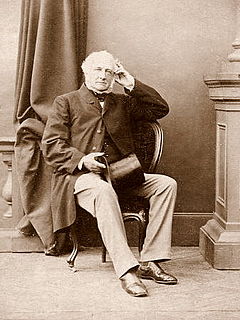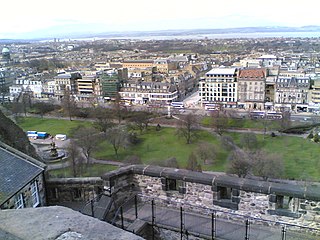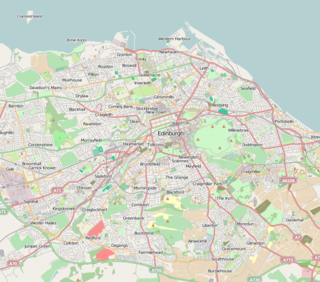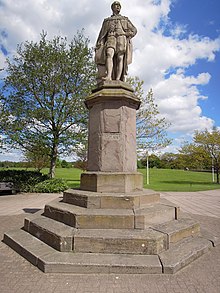
Balmoral Castle is a large estate house in Royal Deeside, Aberdeenshire, Scotland, owned by Queen Elizabeth II. It is near the village of Crathie, 9 miles west of Ballater and 50 miles west of Aberdeen.

Perth is a city in central Scotland, on the banks of the River Tay. It is the administrative centre of Perth and Kinross council area and the historic county town of Perthshire. It had a population of about 47,180 in 2012. Perth has been known as The Fair City since the publication of the story Fair Maid of Perth by Scottish writer Sir Walter Scott in 1828. During the later medieval period the city was also called St John's Toun or Saint Johnstoun by its inhabitants—a reference to its principal church, which was dedicated to St John the Baptist. This name is preserved in the name of the city's football club, St Johnstone F.C. Perth is twinned with Aschaffenburg in the German state of Bavaria and there are several places in the world named after Scotland’s Perth, including Perth in Western Australia, Perth in Tasmania, and Perth in Ontario, Canada.

The Great Exhibition of the Works of Industry of All Nations, also known as the Great Exhibition or the Crystal Palace Exhibition, was an international exhibition which took place in Hyde Park, London, from 1 May to 15 October 1851. It was the first in a series of World's Fairs, exhibitions of culture and industry that became popular in the 19th century. The Great Exhibition was organised by Henry Cole and by Prince Albert, husband of the reigning monarch of the United Kingdom, Queen Victoria.

The Albert Memorial, directly north of the Royal Albert Hall in Kensington Gardens, London, was commissioned by Queen Victoria in memory of her beloved husband Prince Albert, who died in 1861. Designed by Sir George Gilbert Scott in the Gothic Revival style, it takes the form of an ornate canopy or pavilion 176 feet (54 m) tall, in the style of a Gothic ciborium over the high altar of a church, sheltering a statue of the prince facing south. It took over ten years to complete, the £120,000 cost met by public subscription.

George Square is the principal civic square in the city of Glasgow, Scotland. It is one of six squares in the city centre, the others being Cathedral Square, St Andrew's Square, St Enoch Square, Royal Exchange Square, and Blythswood Square on Blythswood Hill.

Sir Joseph Edgar Boehm, 1st Baronet, was a medallist and sculptor, best known for the "Jubilee head" of Queen Victoria on coinage, and the statue of the Duke of Wellington at Hyde Park Corner. During his career Boehm maintained a large studio in London and produced a significant volume of public works and private commissions. A speciality of Boehm's was the portrait bust; there are many examples of these in the National Portrait Gallery. He was often commissioned by the Royal Family and members of the aristocracy to make sculptures for their parks and gardens. His works were many, and he exhibited 123 of them at the Royal Academy from 1862 to his death in 1890.

Albert Square is a public square in the centre of Manchester, England. It is dominated by its largest building, the Grade I listed Manchester Town Hall, a Victorian Gothic building by Alfred Waterhouse. Other smaller buildings from the same period surround it, many of which are listed.

Baron Pietro Carlo Giovanni Battista Marochetti was an Italian-born French sculptor who worked in France, Italy and Britain. He completed many public sculptures, often in a neo-classical style, plus reliefs, memorials and large equestrian monuments in bronze and marble. In 1848, Marochetti settled in England, where he received commissions from Queen Victoria. Marochetti received great recognition during his lifetime, being made a baron in Italy and was awarded the Legion of Honour by the French government.

The New Town is a central area of Edinburgh, the capital of Scotland. It was built in stages between 1767 and around 1850, and retains much of its original neo-classical and Georgian period architecture. Its best known street is Princes Street, facing Edinburgh Castle and the Old Town across the geological depression of the former Nor Loch. Together with the Old Town, the New Town was designated a UNESCO World Heritage Site in 1995. The area is also famed for the New Town Gardens, a heritage designation since March 2001.

The Palace of Holyroodhouse, commonly referred to as Holyrood Palace or Holyroodhouse, is the official residence of the British monarch in Scotland. Located at the bottom of the Royal Mile in Edinburgh, at the opposite end to Edinburgh Castle, Holyroodhouse has served as the principal royal residence in Scotland since the 16th century, and is a setting for state occasions and official entertaining.

Joseph Durham was an English sculptor.

Richard Coeur de Lion is a Grade II listed equestrian statue of the 12th-century English monarch Richard I, also known as Richard the Lionheart, who reigned from 1189–1199. It stands on a granite pedestal in Old Palace Yard outside the Palace of Westminster in London, facing south towards the entrance to the House of Lords. It was created by Baron Carlo Marochetti, an Italian sculptor whose works were popular with European royalty and the nobility, though often less well regarded by critics and the artistic establishment. The statue was first produced in clay and displayed at The Great Exhibition in 1851, where it was located outside the west entrance to the Crystal Palace. It was well received at the time and two years later Queen Victoria and Prince Albert headed a list of illustrious subscribers to a fund that aimed to raise money for the casting of the statue in bronze.

North Inch is a large public park in Perth, Scotland. About 54 hectares in size, it is one of two "Inches" in Perth, the other being the smaller, 31-hectare South Inch, located half a mile across the city. The inches were granted to the city, when it was a royal burgh, by King Robert II in 1374. Both inches were once islands in the River Tay. The inches are connected by Tay Street.
The Royal George Hotel is a hotel and restaurant in Perth, Scotland. It is a Category B listed building dating to 1773. Its main entrance is on George Street, though its Tay Street frontage, overlooking the River Tay, is more well known. It is named for George III.
















